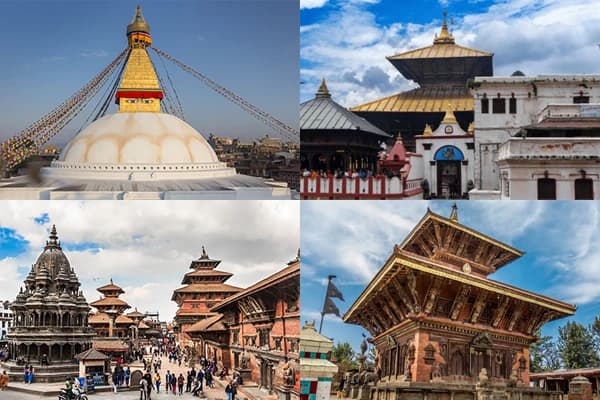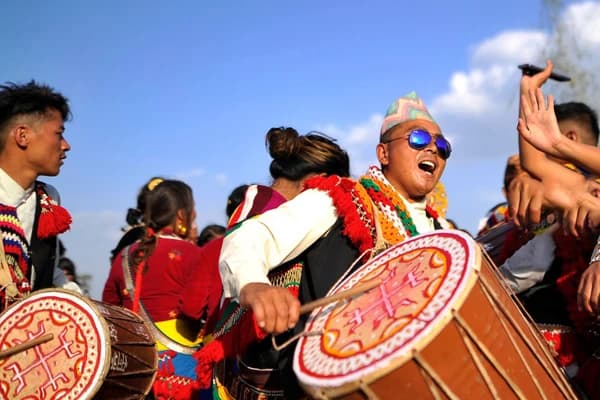Importance of Chhath Festival in Nepal
Chhat Parva is deeply rooted in the Nepali culture and traditions. No doubt, the festival is the important part of the Nepali heritage. The festival is dedicated to the sun god, who is the source of life on earth. Through this festival, devotees thank the sun goddess for playing the important role in providing health, wealth, and prosperity.

The music, attire, and dances of the festival rituals and culture promote the family bonds and preserve the customs for future generations. In the rituals, women lead and play the central role, which empowers them within families and communities.
Various ethnic groups celebrate the Chhat festival. This festival brings people from various ethnic groups together, transcending regional boundaries and showcasing Nepal's cultural diversity. During the festival period, the environment becomes joyful, and all devotees gather, fostering unity among diverse communities.
History of Chhath festival in Nepal
There is great history behind Chhath Puja. It is an Indo-Nepali festival. It is believed that people have been celebrating this festival since the Vedic period. The Chhath festival celebrations are mentioned in various Hindu texts, including the Ramayana and Mahabharata.
There is a popular Chhath Puja story about Sita from the Ramayana. During her time at Valmiki Ashram in Nepal, she celebrated Chhath. Since then, people have adapted and are following the culture. Like this, there are several other stories.
Another story linking to the Mahabharata: Draupadi, the wife of the Pandavas, is said to have performed Chhath rituals to seek blessings from Surya during their trials. It helped the Pandavas win the war against the Kauravas.
In addition, there is an importance of Surya as a life-giving force and rituals associated with sun worship mentioned in one of the oldest scriptures in Hinduism, the Rigveda. The Chhath festival’s origin is also linked to these ancient texts.
Rituals and Traditions of Chhat Festival
There are various rituals and traditions associated with the Chhat festival celebrations in Nepal. Each ritual on different days has unique importance. Below are some detailed descriptions of the four-day rituals and traditions.
Day 1: Nahai Khai (Bathing and Eating)
There are various rituals and traditions associated with the Chhat festival celebrations in Nepal. Each ritual on different days has unique importance. Below are some detailed descriptions of the four-day rituals and traditions.
During the purification process, the devotees collect the water. The devotees later use the collected water for cooking offerings. Once the body has completed its purification process, the devotees proceed to clean the household, its surroundings, and the pathway leading to the riverbank (Ghat).
After completing all purification rituals, devotees prepare a special meal known as the satvik meal. The ingredients of a satvik meal are bottle gourd (lauki) and Bengal gram lentils (chana dal), accompanied by plain rice. The meal is purely vegetarian. Adding items like onions, garlic, or salt is against the traditions.
In some places, a meal consisting of rice, lentils, and pumpkin (kaddu), cooked with turmeric, called Kaddu-Bhat, is prepared. The devotees then offer the pure and simple Sattvik meal to Chhathi Maiya, the goddess associated with Chhath, in the afternoon. This meal is the last meal of the devotees before they enter a period of fasting.
Day 2: Kharna
Kharna is the second day of the Chhath festival celebrations. On this day, devotees fast and prepare for the main worship. The fasting is very strict, and even drinking water is not allowed. Throughout the day, devotees engage in prayers and meditation.
As the sun sets near, devotees prepare a special dish known as kheer. The ingredients of the kheer include newly harvested rice, jaggery (unrefined sugar), and milk. Food items such as chapatis (flatbreads) accompany the kheer.
Just before sunset, devotees perform rituals and offer the prepared food items to the Chhathi Maiya. Giving the dishes to God purifies them. Thereafter, devotees break their fast by consuming the prasad (pure dishes). The family members share the remaining Prasad.
Day 3: Sandhya Arghya (Evening Offerings)
The third day of the Chhat festival celebrations is known as Sandhya Arghya. On this day, devotees offer their prayers to the setting sun. On this day, the devotees also observe a fast. This day's fasting is similar to the Kharna fast.
The preparation of various offerings (prasad) takes place. The offerings typically include thekua (a sweet made from wheat flour and jaggery), seasonal fruits such as bananas and coconuts, and rice laddu. The bamboo trays are used to arrange and decorate the thekua.
Then, in the evening, when the sun is about to set, devotees gather on the banks of rivers, ponds, or lakes to perform Arghya. Arghya is basically a ritual offering of water mixed with Gangajal (holy river water) to the setting sun. Upon completion of the arghya, the day's rituals conclude.
Day 4: Usha Arghya (morning offerings)
This is the final day of the Chhath festival. On this day, devotees wake up early in the morning and gather at the riverbanks before sunrise. As the sun begins to rise, devotees enter the river, pond, or lake and offer the Arghya (water offerings) to the rising sun.
The other offerings include seasonal fruits, flowers, and other items prepared over the previous days. After that, the devotees break their fast with a small amount of ginger and water. After the ritual, family members prepare and share a special meal known as Paran or Parna. This marks the end of the Chhath festival.
Attire, Songs, and Food Associated with Chhath
The Chhath festival is the celebration with traditional songs sung, beautiful attire worn, and delicious food served. There are various rituals and days in which unique food items are prepared and consumed along with prayers and aartis.
Traditional clothing
The clothes include sarees, traditional jewelry, dupattas, and floral accessories for women. Men wear kurta-pajamas or dhotis, also in bright hues.
Folk songs
During the Chhat festival, notable folk songs such as Kera Je Pharal Ghaurme, Sajhuka Arghya, and Bhoraka Arghya are sung.
Special food items
During the festival celebrations of Chhat, various food items are prepared, including Kaddhu Bhaat (Bottle Gourd with Rice), Kheer (Sweet Rice Pudding), Thekua, Kasar, Chana (Green Gram), Fruits, and so on. These food items are prepared, offered, and consumed on the different days of the festive celebrations.
Tips for travelers attending Chhath Festival
- Arrive early in order to see the pre-festive environments and for easy arrival.
- Dress appropriately and be respectful to the devotees and other people around you.
- You can participate in rituals before sunrise, such as bathing in rivers (like the Koshi or Gandaki) and offering 'Arghya' (offerings) to the sun.
- Try to connect with the locals and participate in communal prayers and songs.
- Indulge in some traditional dishes, such as thekua, a sweet made with wheat flour, fruits, and rice pudding (kheer).
- Be mindful of local customs and practices.
- Try to combine your visit to Nepal during this festival with treks like the everest base camp trek, annapurna base camp trek, manaslu circuit trek, and many more.
- Visit key locations like Kathmandu, Janakpur, and Birgunj.
- Alongside visiting key festival places, you can also combine it with kathmandu heritage tour.
- Look out for folk music performances and dance events that often accompany the festival.
Conclusion
The Chhat festival is indeed an important festival after Dashain and Tihar. The Madhesi community in the Terai region celebrates the festival. It is celebrated in honor of Surya Dev (the Sun God) and Chhathi Maiya (the Goddess of Shashthi). This 4-day festival includes various rituals where several dishes are prepared and offered to the god. During these rituals, devotees fast, pray, and meditate. The festival ends with the Usha Arghya.






